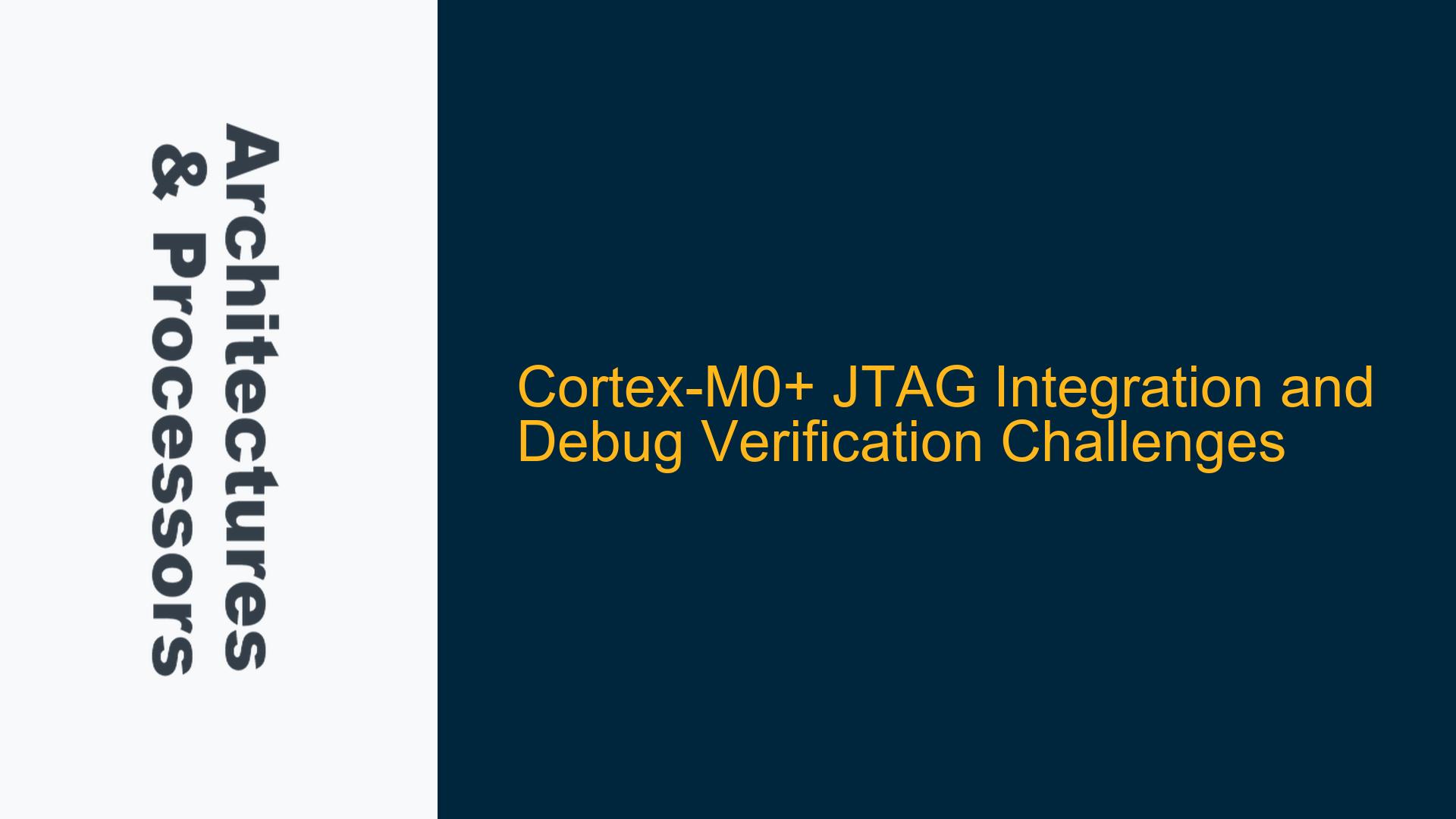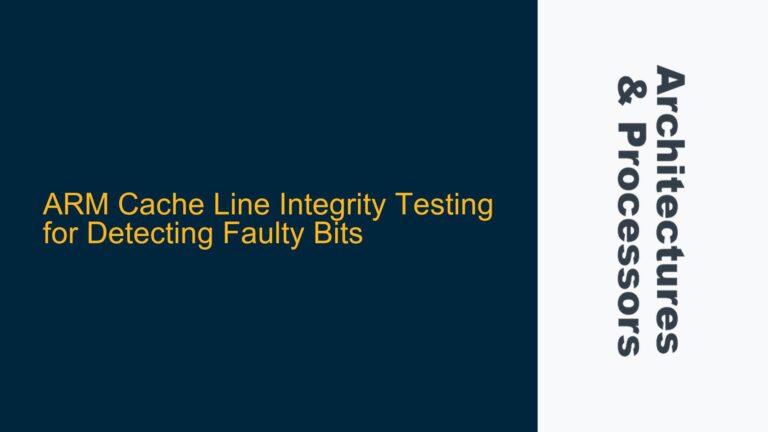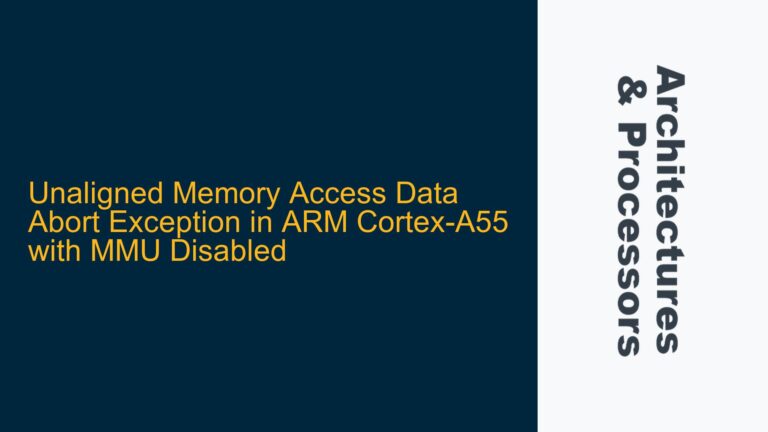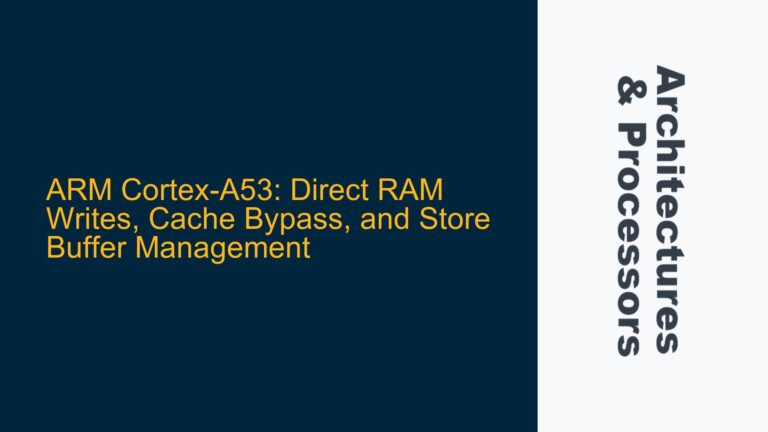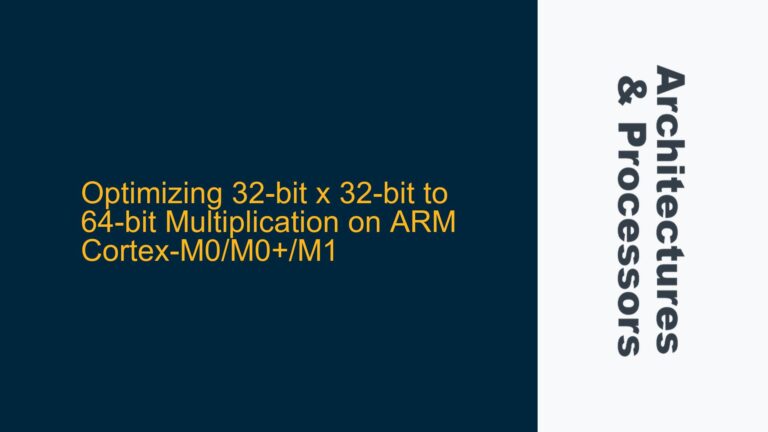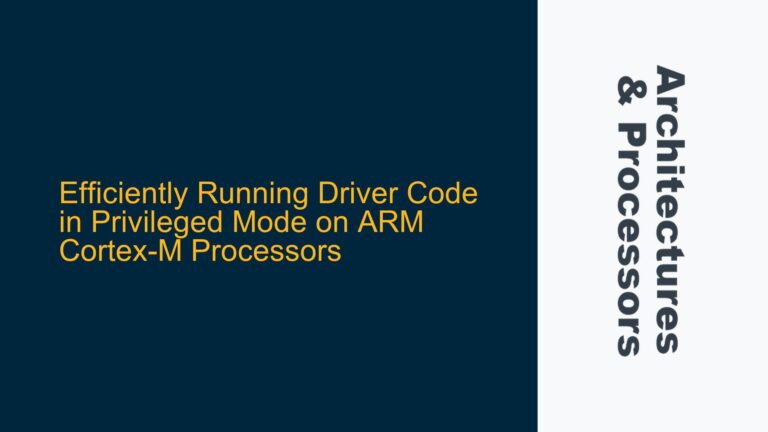Cortex-M0+ JTAG Integration and Debug Verification Challenges
Integrating the Cortex-M0+ processor into an SoC and ensuring the correctness of the JTAG interface for debugging is a critical task that requires meticulous attention to detail. The JTAG interface is essential for enabling features such as breakpoint insertion, single-stepping, and real-time debugging via tools like GDB. However, verifying the JTAG integration is not straightforward, as it involves multiple layers of the design, including the processor core, the debug subsystem, and the external JTAG controller. This post delves into the challenges of verifying JTAG integration, explores potential causes of integration issues, and provides detailed troubleshooting steps and solutions.
JTAG Protocol Compliance and Debug Subsystem Configuration
The JTAG interface in the Cortex-M0+ processor is governed by the ARM Debug Interface (ADI) and the Debug Access Port (DAP). The DAP provides access to the processor’s debug registers and memory-mapped peripherals through the JTAG interface. Ensuring compliance with the JTAG protocol and correctly configuring the debug subsystem are critical for successful integration.
The JTAG protocol defines a set of instructions and data registers that facilitate communication between the external debugger and the processor. The Cortex-M0+ implements a subset of these instructions, including BYPASS, IDCODE, and DEBUG. The DEBUG instruction is particularly important, as it enables access to the DAP and the processor’s debug registers. Misconfiguration of the debug subsystem or non-compliance with the JTAG protocol can lead to issues such as failure to connect to the processor, inability to set breakpoints, or incorrect single-stepping behavior.
One common issue is the incorrect initialization of the Debug Control and Status Register (DCSR). The DCSR is responsible for enabling debug mode, controlling single-stepping, and managing breakpoints. If the DCSR is not properly configured, the processor may not respond to debug commands, or the debugger may fail to halt the processor. Another potential issue is the misalignment of the JTAG clock (TCK) with the processor’s system clock. The JTAG clock must be synchronized with the system clock to ensure reliable communication between the debugger and the processor.
To verify JTAG protocol compliance and debug subsystem configuration, it is essential to simulate the JTAG interface using a testbench that models the external debugger. The testbench should generate JTAG commands and verify the processor’s responses. Additionally, the testbench should include checks for the correct initialization of the DCSR and other debug registers. Running predefined tests from the Cortex-M0+ integration kit can help identify protocol compliance issues, but these tests should be supplemented with custom tests that target specific aspects of the JTAG interface.
Potential Causes of JTAG Integration Failures
Several factors can contribute to JTAG integration failures in a Cortex-M0+ based SoC. These include incorrect pin mapping, timing violations, and power domain issues. Each of these factors can manifest in different ways, making it challenging to diagnose the root cause of the problem.
Incorrect pin mapping is a common cause of JTAG integration failures. The JTAG interface consists of five mandatory signals: TCK, TMS, TDI, TDO, and TRST. These signals must be correctly mapped to the processor’s pins and routed to the external debugger. Misalignment of these signals can result in communication failures between the debugger and the processor. For example, if the TDO signal is not correctly routed, the debugger will not receive the processor’s responses to JTAG commands.
Timing violations can also lead to JTAG integration issues. The JTAG interface operates at a lower frequency than the processor’s system clock, but the signals must still meet setup and hold time requirements. Violations of these requirements can cause data corruption or communication failures. For instance, if the TMS signal does not meet the setup time requirement, the processor may misinterpret the JTAG state transitions, leading to incorrect behavior.
Power domain issues can further complicate JTAG integration. The Cortex-M0+ processor may have multiple power domains, including a dedicated power domain for the debug subsystem. If the debug subsystem is not powered on or if there are issues with power domain crossings, the JTAG interface may not function correctly. For example, if the debug subsystem is in a low-power state, the processor may not respond to JTAG commands, or the debugger may fail to halt the processor.
To identify the root cause of JTAG integration failures, it is essential to perform a thorough analysis of the design, including the pin mapping, timing constraints, and power domain configuration. This analysis should be complemented by simulation and debugging using a JTAG testbench. The testbench should include checks for signal integrity, timing violations, and power domain issues. Additionally, it is important to review the synthesis and implementation reports to ensure that the JTAG signals are correctly routed and that there are no timing violations.
Implementing a Comprehensive JTAG Verification Strategy
To ensure the correctness of the JTAG interface in a Cortex-M0+ based SoC, it is essential to implement a comprehensive verification strategy that covers all aspects of the JTAG protocol and the debug subsystem. This strategy should include simulation, emulation, and silicon validation.
Simulation is the first step in the verification process. A JTAG testbench should be developed to simulate the external debugger and verify the processor’s responses to JTAG commands. The testbench should include tests for all JTAG instructions, including BYPASS, IDCODE, and DEBUG. Additionally, the testbench should include checks for the correct initialization of the DCSR and other debug registers. The simulation should also cover corner cases, such as power domain crossings and timing violations.
Emulation is the next step in the verification process. An emulator can be used to run the JTAG testbench on the actual hardware, providing a more accurate representation of the system’s behavior. The emulator should be configured to model the external debugger and the JTAG interface. The emulation should include tests for all JTAG instructions and checks for signal integrity, timing violations, and power domain issues. Additionally, the emulation should include tests for real-world scenarios, such as inserting breakpoints and single-stepping through code.
Silicon validation is the final step in the verification process. The JTAG interface should be tested on the actual silicon to ensure that it functions correctly in the final product. The validation should include tests for all JTAG instructions and checks for signal integrity, timing violations, and power domain issues. Additionally, the validation should include tests for real-world scenarios, such as inserting breakpoints and single-stepping through code. The validation should also include tests for the interaction between the JTAG interface and other system components, such as the memory subsystem and the peripherals.
To implement a comprehensive JTAG verification strategy, it is essential to use a combination of simulation, emulation, and silicon validation. Each of these steps provides a different level of abstraction and helps identify different types of issues. By combining these steps, it is possible to ensure the correctness of the JTAG interface and the debug subsystem in a Cortex-M0+ based SoC.
Detailed Troubleshooting Steps for JTAG Integration Issues
When troubleshooting JTAG integration issues in a Cortex-M0+ based SoC, it is important to follow a systematic approach that includes signal integrity checks, timing analysis, and power domain verification. Each of these steps is critical for identifying and resolving issues that may arise during the integration process.
Signal integrity checks are the first step in troubleshooting JTAG integration issues. The JTAG interface consists of five mandatory signals: TCK, TMS, TDI, TDO, and TRST. These signals must be correctly routed and free from noise and interference. Signal integrity issues can manifest as communication failures between the debugger and the processor. To check for signal integrity issues, it is essential to use a logic analyzer or an oscilloscope to capture the JTAG signals and verify their waveforms. The waveforms should be checked for noise, glitches, and incorrect voltage levels. Additionally, the signals should be checked for correct routing and termination.
Timing analysis is the next step in troubleshooting JTAG integration issues. The JTAG interface operates at a lower frequency than the processor’s system clock, but the signals must still meet setup and hold time requirements. Timing violations can cause data corruption or communication failures. To perform timing analysis, it is essential to use a timing analyzer tool to verify the setup and hold times for the JTAG signals. The timing analyzer should be configured with the correct clock frequencies and timing constraints. The analysis should include checks for all JTAG signals, including TCK, TMS, TDI, TDO, and TRST. Additionally, the analysis should include checks for clock skew and jitter.
Power domain verification is the final step in troubleshooting JTAG integration issues. The Cortex-M0+ processor may have multiple power domains, including a dedicated power domain for the debug subsystem. Power domain issues can cause the JTAG interface to malfunction. To verify the power domain configuration, it is essential to use a power analyzer tool to check the voltage levels and power sequencing for the debug subsystem. The power analyzer should be configured with the correct voltage levels and power sequencing requirements. The verification should include checks for power domain crossings and low-power states. Additionally, the verification should include checks for the interaction between the JTAG interface and other system components, such as the memory subsystem and the peripherals.
By following these troubleshooting steps, it is possible to identify and resolve JTAG integration issues in a Cortex-M0+ based SoC. Each of these steps provides a different level of insight into the system’s behavior and helps identify different types of issues. By combining these steps, it is possible to ensure the correctness of the JTAG interface and the debug subsystem.
Conclusion
Verifying the JTAG interface in a Cortex-M0+ based SoC is a complex task that requires a thorough understanding of the JTAG protocol, the debug subsystem, and the system’s overall architecture. By following a systematic approach that includes simulation, emulation, and silicon validation, it is possible to ensure the correctness of the JTAG interface and the debug subsystem. Additionally, by performing signal integrity checks, timing analysis, and power domain verification, it is possible to identify and resolve JTAG integration issues. By combining these steps, it is possible to ensure that the JTAG interface functions correctly in the final product, enabling features such as breakpoint insertion, single-stepping, and real-time debugging via tools like GDB.
